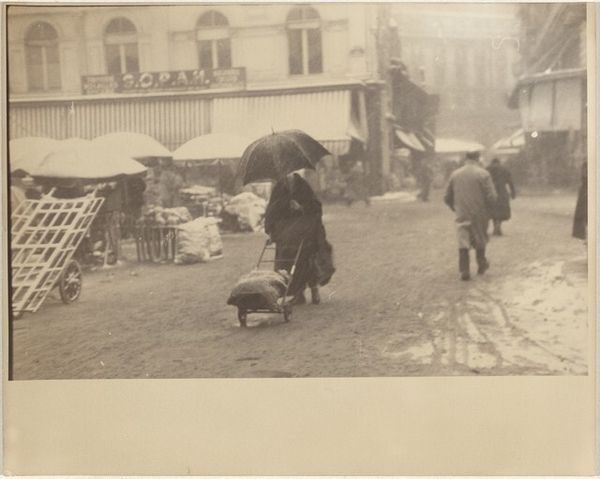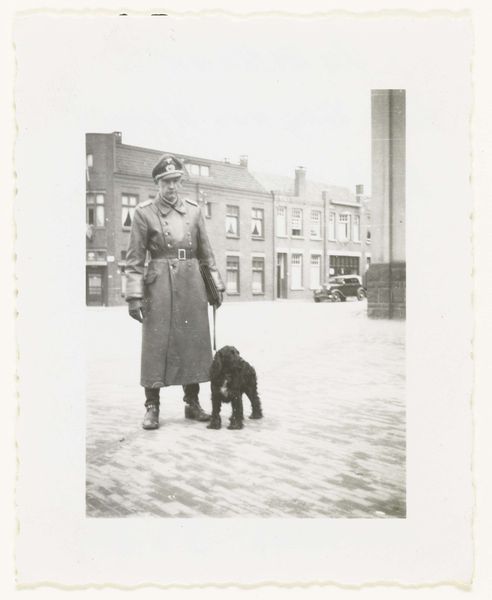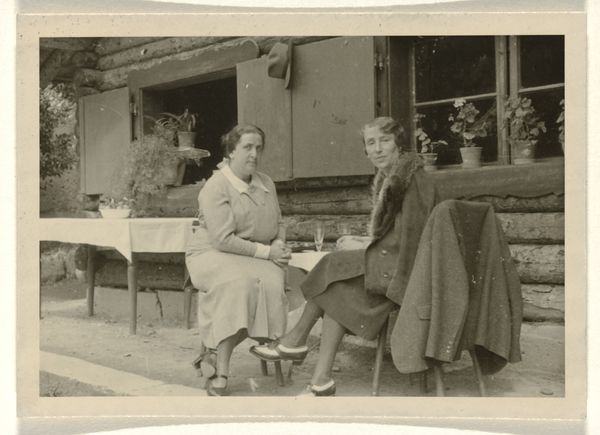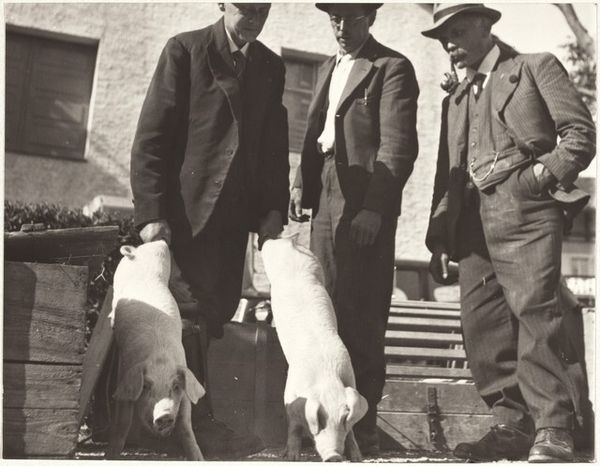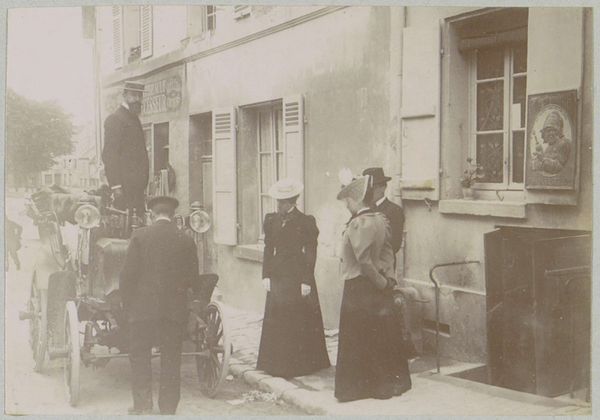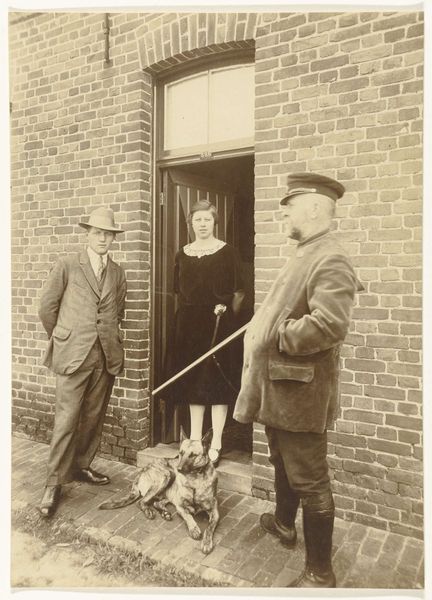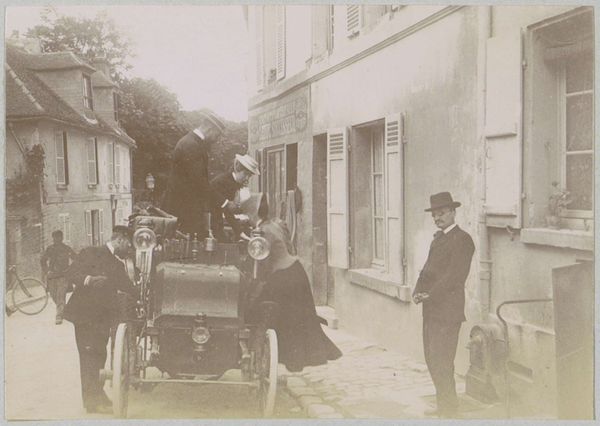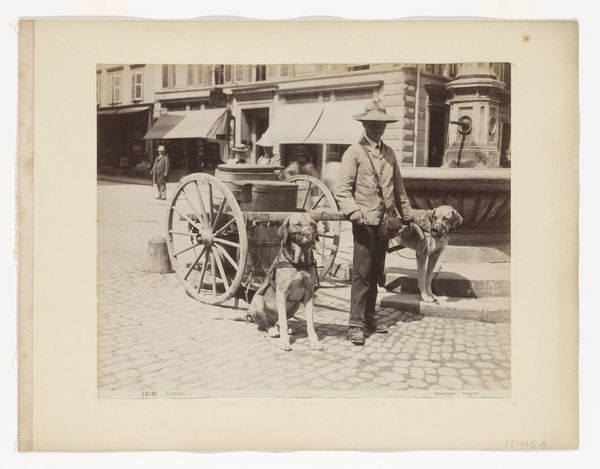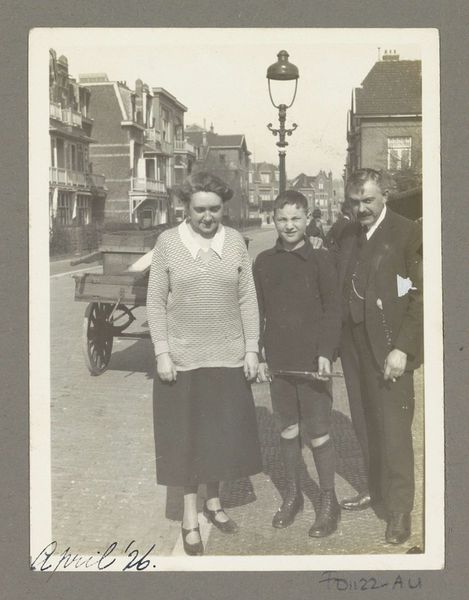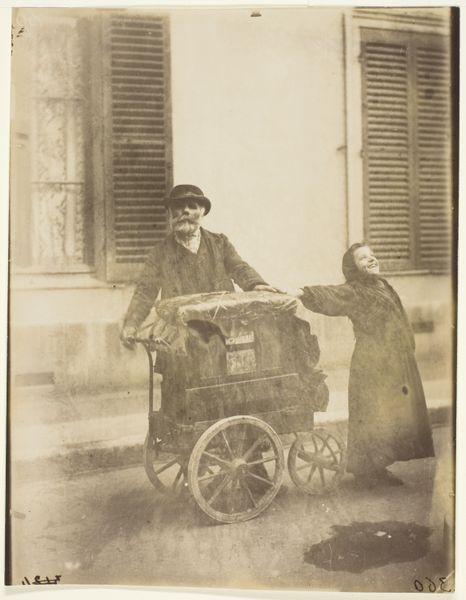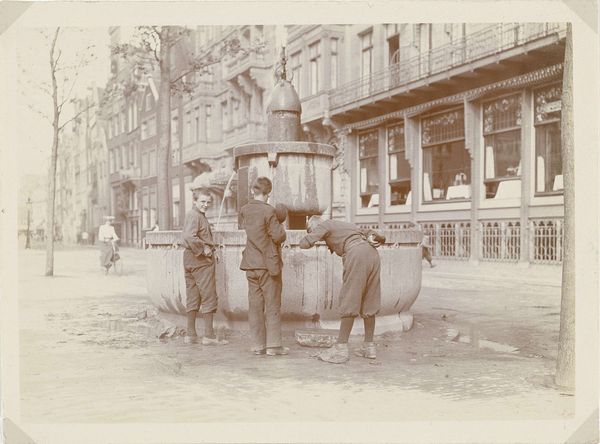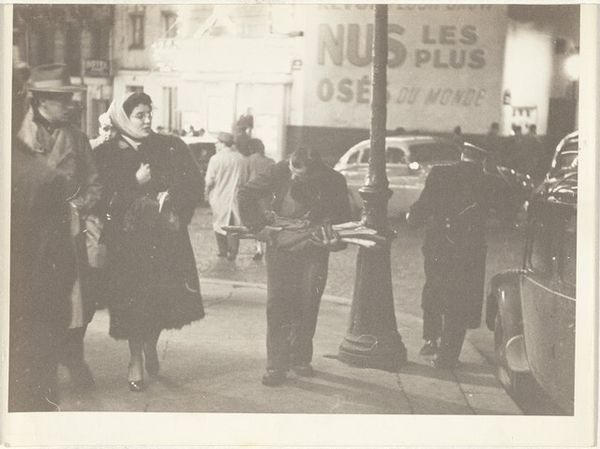
photography
#
portrait
#
print photography
#
landscape
#
street-photography
#
photography
#
historical photography
#
genre-painting
#
realism
Dimensions: image: 6.8 x 8 cm (2 11/16 x 3 1/8 in.) sheet: 7.5 x 8.7 cm (2 15/16 x 3 7/16 in.)
Copyright: National Gallery of Art: CC0 1.0
Editor: This photograph, "Street vendors--People," by Robert Frank, dated between 1941 and 1945, captures a street scene with vendors and passersby. I am struck by the ordinary nature of the subject; it feels like a snapshot of everyday life during wartime. What's your interpretation? Curator: This photograph isn't just a snapshot. Consider the cart, its make, and the wear evident in the image; it reveals the vendor's resources and constraints. The materials—metal, wood—speak to available supplies during that period. How does its presence, a humble vending machine, challenge notions of high art? Editor: I see your point! The focus isn’t just on aesthetics; it's on the means of making a living. The material realities of the vendors are central to understanding the photo. Does the labor involved alter our perception? Curator: Precisely. Frank is pointing to the physical labor, the tools and the raw ingredients for sustenance. Think about how access to these materials defines social standing during a period of war and rationing. Even the dog alludes to materiality. Does the inclusion of the dog further speak about class or labor? Editor: The dog could be there as a companion, or perhaps it’s performing a service, like guarding the cart. Considering Frank’s use of seemingly mundane materials like everyday carts, you suggest his artwork pushes the viewer to value it for cultural rather than aesthetic properties? Curator: Exactly! By highlighting these everyday objects, he makes us think about labor, production, and survival, all integral to human existence, all presented through materials. Editor: This has really opened my eyes to considering the socio-economic context embedded within the artwork itself. Curator: Indeed. It reminds us that even a simple photograph can be a powerful statement about material conditions.
Comments
No comments
Be the first to comment and join the conversation on the ultimate creative platform.


